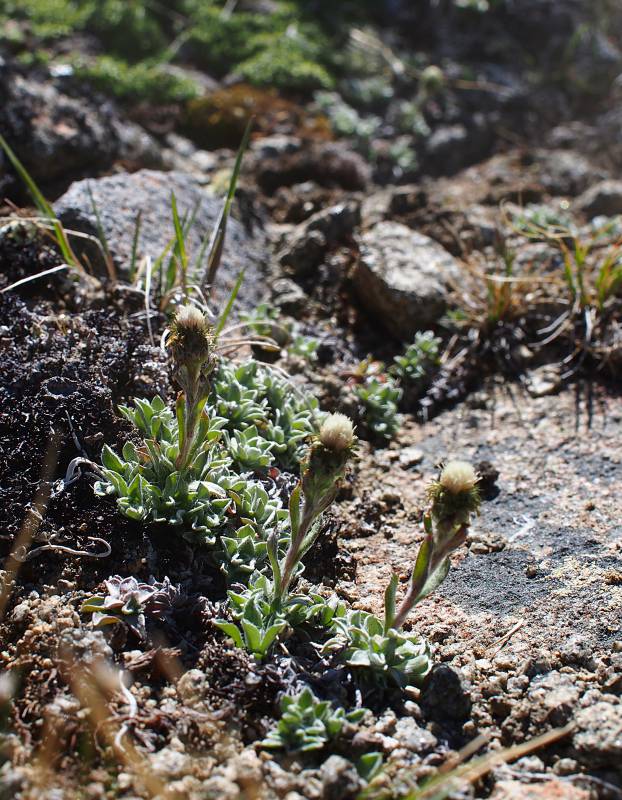Antennaria suffrutescens
Antennaria monocephala
pygmy pussytoes, single-headed pussytoes
Involucres staminate 5–7 mm, pistillate 5–8 mm, phyllaries distally brown, dark brown, black, or olivaceous; staminate corollas 2.5–3.5 mm, white, yellow, or red, narrowly funnelform or tubular (lobes usually 5, erect to recurved); pistillate corollas 3.5–4 mm, white, yellow, or red, narrowly tubular to filiform;
receptacles flat to convex or ovoid, foveolate, epaleate; ray florets 0;
disc florets mostly 20–100+;
pappi: staminate 3–4 mm (none in gynoecious populations).
Cypselae 1–1.3 mm tall, often glabrous, usually papillate.
Antennaria suffrutescens
Antennaria monocephala
Reported from the North Cascades in Washington; Alaska to British Columbia, east to Alberta, Montana, and Wyoming; also in the Russian Far East.


